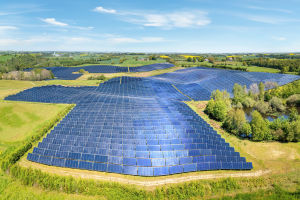In recent years, quadcopters—commonly known as four-axis drones—have gained massive popularity. These compact, versatile, and powerful flying machines have captured the imagination of tech enthusiasts, hobbyists, and professionals alike.
Whether for recreational flying, aerial photography, or educational purposes, quadcopters have become an essential tool in the world of unmanned aerial vehicles (UAVs). Let's explore the exciting world of quadcopters, from their components to the basics of building and flying one!
How To Fly a Drone - Beginners Guide
Video by Jeven Dovey
Understanding the Basics of Quadcopters
A quadcopter is a type of drone that is powered by four rotors, making it incredibly stable and easy to control. It operates by using a combination of lift and direction control, ensuring that the aircraft remains balanced during flight. These drones are known for their simplicity and accessibility, making them ideal for beginners in drone flying.
In addition to their ease of use, quadcopters are equipped with a range of sensors such as gyroscopes, accelerometers, and barometers to maintain stability and accurate altitude control. This means that even if you’re a first-time pilot, flying a quadcopter can be relatively simple.
The Essential Components of a Quadcopters
To truly appreciate the inner workings of a quadcopter, it’s crucial to understand its key components. Each part plays an integral role in the flight performance and overall functionality of the drone.
Frame and Body
The frame, often made from lightweight materials like carbon fiber or plastic, provides the necessary structure to house all the other components. It's designed to be durable yet light enough to avoid weighing down the drone. The layout and design of the frame are crucial for ensuring proper balance and stability during flight.
performance.Motors and Propellers
Motors are responsible for driving the propellers, which provide lift. The power and size of the motors directly impact the drone’s stability and payload capacity. Propellers, on the other hand, come in various sizes and designs, impacting the drone’s speed and maneuverability. Choosing the right motors and propellers based on your needs is critical for smooth performance.
Flight Controller
The flight controller is the brain of the quadcopter. It’s responsible for interpreting the input from the pilot and adjusting the drone’s movements accordingly. The flight controller uses various sensors, such as accelerometers and gyroscopes, to maintain stable flight and keep the drone level. It processes all the data and makes real-time adjustments to the motors and flight paths.
Power Supply
Quadcopters rely on lithium-polymer (LiPo) batteries to power their motors and electronics. These batteries are lightweight yet have a high energy density, making them ideal for drones. The battery life can vary depending on the size of the drone, payload, and flying conditions. A good battery ensures longer flight times and better performance.
Building Your Own Quadcopters
Building a quadcopter from scratch may sound intimidating, but it can be a rewarding experience for those interested in DIY projects. By assembling the key components yourself, you gain a better understanding of how each part interacts, and you can customize the drone to suit your specific needs.
To get started, you will need the following:
1. A frame
2. Four motors and propellers
3. A flight controller
4. A radio transmitter and receiver
5. A battery and power distribution board
6. ESC (Electronic Speed Controllers)
Once you’ve gathered all the parts, assembling the quadcopter typically involves mounting the motors onto the frame, wiring the power system, connecting the ESC to the flight controller, and calibrating the flight system for stability. The process can take time and patience, but with enough effort, you can have a fully functional quadcopter ready for the skies!
Flying Your Quadcopters
After assembling your quadcopter, it’s time for the fun part—flying! Start in a spacious, open area free of obstacles. For your first flight, it’s essential to practice controlling the altitude and direction in a controlled manner.
The primary controls for a quadcopter are as follows:
Throttle: Controls the altitude of the drone.
Yaw: Adjusts the orientation (turns the drone left or right).
Pitch: Controls the forward and backward movement.
Roll: Adjusts the side-to-side movement.
A good tip is to fly in a calm environment without wind, especially when you’re learning. Begin by making small movements, and as you become more confident, you can try more advanced maneuvers.
The Future of Quadcopters
Quadcopters have already made a significant impact in various industries, including aerial photography, surveillance, and even package delivery. With advancements in technology, the capabilities of quadcopters continue to grow. Features like aut, and improved camera technology are pushing the boundaries of what these drones can achieve.
As we look to the future, we can expect quadcopters to become even more integral to our daily lives, from helping with search-and-rescue operations to assisting in environmental monitoring. The world of quadcopters is evolving rapidly, and for those of us who enjoy exploring new technologies, it’s an exciting time to be involved.
Embracing the Future of Flight
Whether you’re looking to build your own quadcopter or simply want to take your drone flying to the next level, the journey is filled with learning and excitement. From understanding the basics of flight to assembling your own drone, quadcopters offer a unique hands-on experience that’s both fun and educational. So, are you ready to take to the skies and explore the world of quadcopters? Happy flying, Lykkers!


